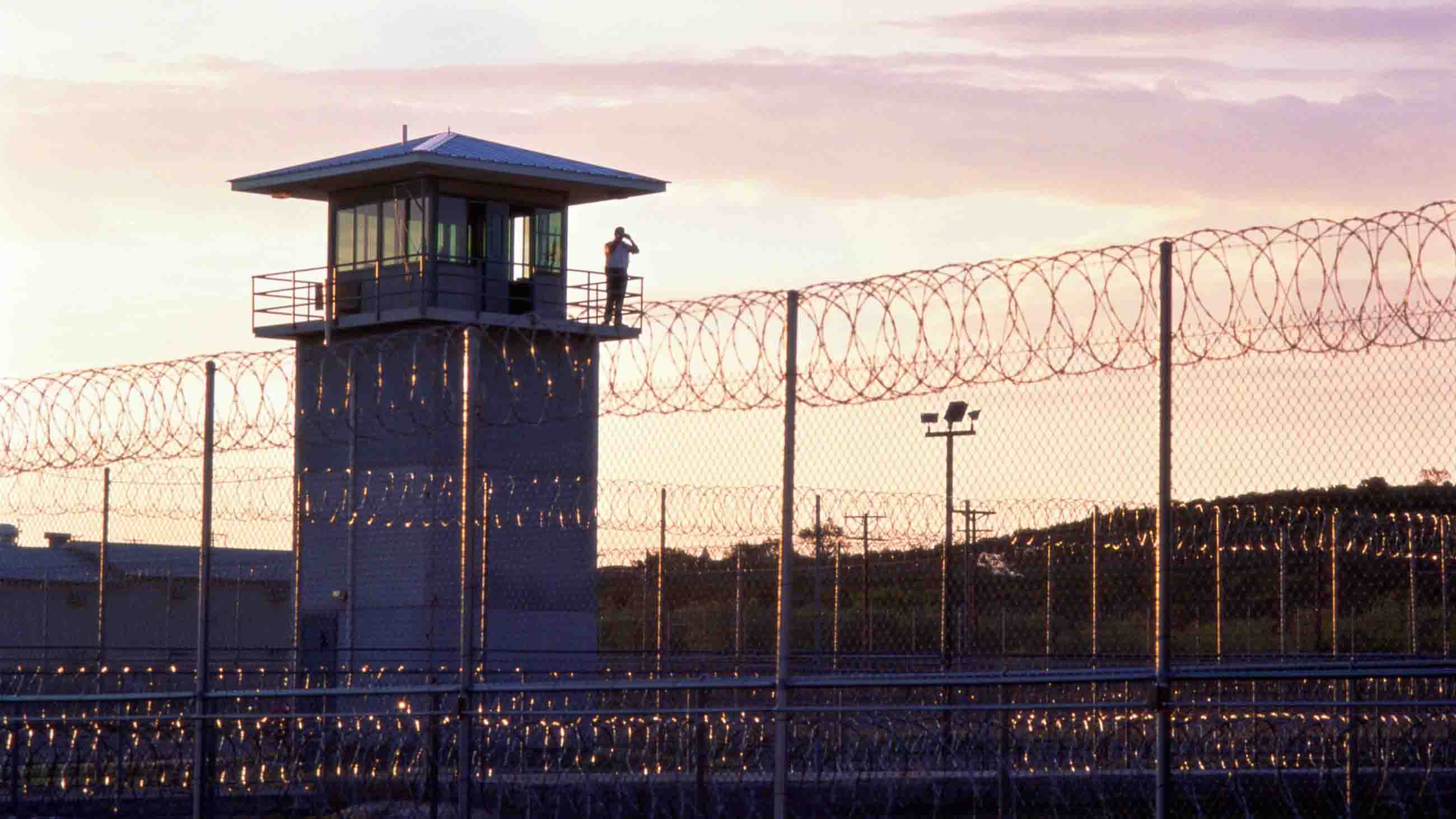To Reduce Long-Term Health Gaps, a Push for Early Intervention in Juvenile Detention
In the weeks before they leave the juvenile detention center, incarcerated children in Connecticut meet with counselors from the Wheeler Clinic, a nonprofit that works with high-risk youth as they transition back into their community. They talk about social connections, they talk about family support. They also talk about vaccinations.
“If their immunizations aren’t up to date, they can’t go back to school,” says Kim Nelson, senior vice president for services at the Wheeler Clinic. That’s a big reason the transition includes a medical plan, she says. Counselors know that incarceration puts young people at risk for bad health outcomes down the line, and they hope a relationship with a doctor can ease that chance.
“We want to keep the kids healthy,” says Nelson.
That can be harder for populations disproportionately represented in the juvenile detention system. Indeed, black children in Connecticut are five times more likely to be arrested than their white counterparts — and they are more than twice as likely to be sentenced to a correctional facility. Across the country, non-whites account for only one-third of the population of adolescents, but two-thirds of the adolescents in juvenile detention.
That’s why some researchers are now beginning to suspect that juvenile detention, which fragments health care during key preventative windows, may actually play a role in the long-running and well-documented health gaps that exist between white and non-white adults in the United States. Any young person under 18 years old in contact with the criminal justice system, from arrest to incarceration, is grouped under the umbrella of “justice involved youth,” and the United States has more of them than any other country: Each year, roughly 2 million kids are arrested, and just over half are placed on probation, while nearly 90,000 are placed in correctional institutions.
In general, research has suggested that even one arrest leads to about a 50 percent increased risk of dying young. And when youth are detained, the risk increases again, and long-term incarceration increases it even more. “The deeper they get into the system, the more at risk they are for health problems,” says Matthew Aalsma, who studies health in the juvenile justice system at the Indiana University School of Medicine.
Those involved with the juvenile justice system are more likely to go for long stretches without health insurance. They use preventative health care services less frequently, and they are about 16 percent more likely to use emergency departments than their peers. As they get older, they are more likely than the general population to engage in sexual behavior that puts them at risk for HIV, AIDS, and other sexually transmitted infections. As adults, they show more symptoms of depression, and have worse overall health.
Socioeconomic factors, which include justice involvement, account for about 40 percent of the variance in health care outcomes between racial groups, says Deena Chisolm, who studies pediatric minority health at Nationwide Children’s Hospital in Columbus, Ohio. “Breaking out how much of the 40 percent is [justice involvement], that’s difficult,” Chisolm says.
That’s because justice involvement is intertwined with other factors that are more likely to affect black and other non-white communities, which also contribute to the overall health care gap. Poverty, low food and housing security, and poor school systems are also clustered in areas with aggressive policing, which in turn leads to greater arrest rates, and involvement with the criminal justice system.
However, research shows that the social and environmental issues that push people into the justice system aren’t totally responsible for the health care repercussions of incarceration. Spending time in prison is its own independent factor contributing to poor health, concluded a longitudinal study in the general prison population on incarceration and health care. “The process linking incarceration to poor health is distinct from the process leading to incarceration,” the authors wrote.
That result was surprising to some in the field, says sociologist Jason Schnittker, one of the authors of that study. “The forces that we characterize as selecting [people] into prison are strong,” he says. But it was clear from the study, Schnittker says, that incarceration itself had serious health consequences.
Researchers point to a wide range of reasons why justice involvement affects health, both in the population in general and in juveniles, from the experience of arrest or incarceration to the repercussions that follow after release.
Even a short time in detention interrupts school, interactions with family, and other daily routines that help young people remain resilient to future mental and physical health problems, Aalsma says. There’s also the stress that comes with being arrested, or detained, or imprisoned. “We think that increased stress can cause inflammation, which might cause later heart risks, and other problems,” he says. Mental health takes a hit as well. And when young people leave the system and turn 18, their record makes it more difficult to find jobs and social support systems — all of which contribute to overall health.
Incarceration also nudges open a gap in medical care, says Elizabeth Barnert at the David Geffen School of Medicine at UCLA, who studies health care among incarcerated youth. Many detention centers, particularly in rural areas, have little to no medical staff. And even in places like Los Angeles, where the centers do have good medical care, “a lot falls apart once they leave,” Barnert says.
Under current policy, incarcerated people don’t qualify for Medicaid — if they had it when they were arrested, it switches off as soon as they enter prison. “The system is really good at turning Medicaid off,” Barnert says. “And it’s really ineffective at turning it back on.”
That off-switch disrupts access to care. “If they want to see a pediatrician or a therapist, or if it’s court mandated, they can’t,” Barnert says. In Connecticut, the Wheeler Clinic tries to help minimize that lag, and some jurisdictions in other states have similar programs. But re-entry programs aren’t everywhere, and the services that they provide aren’t consistent.
In general, young people are healthy, so disrupting their medical care might not have immediate, recognizable effects. But pediatric medicine is typically preventative, and establishes a baseline intended to keep adolescents in good shape as they get older. The impacts of the care might not be apparent for years. Doctors think that gaps in those services can cause problems down the line — though the evidence to prove it is limited, notes Chisolm, largely due to the challenges of conducting long-term studies.
The stress of arrest, of prison; the interruption of school, and family; the time away from a primary care doctor or a therapist: all these factors coalesce inside the justice system, and unspool as soon as kids walk out of the doors of a detention center, nudging them off a solid health care path as they grow into adults. And those kids are much more likely to not be white.
“You can piece the puzzle together,” Barnert says. The data links adolescent justice involvement and poor adult health, and non-white kids are disproportionately confined. And then, down the line, non-white adults have, overall, higher unmet health needs: they’re less likely to have insurance coverage and are more likely to die from diabetes, heart disease, and cancer. They have lower life expectancies, and higher rates of maternal mortality. “It’s a compelling story,” Barnert says.
For Schnittker, the pieces come together in the same way: “It’s clearly the case that non-white people have a much higher risk of having been to prison,” he says. “My interpretation is that, on the flip side, that contributes to health disparities.”
To untangle the web, clinicians are targeting various pieces of the problem, which may vary in different communities. In Los Angeles, for example, Barnert wants to close the continuity gap between health care in prison and health care in the community — with solutions, for example, that get medical records from inside the detention centers cleanly transferred to outside providers. Aalsma says that he’d like to see more programs like Wheeler’s youth justice services, and dedicated health care reentry programs for kids involved in the criminal justice system.
These projects fall under what Chisolm calls midstream solutions, which look at the outcomes after incarceration has already taken place. Those, she says, need to come alongside attempts at upstream solutions, which make changes in the areas that put kids, particularly non-white kids, in contact with the juvenile justice system to begin with: like fixing housing issues, or closing the school-to-prison pipeline, or boosting employment.
“There are a lot of things we can do to mitigate the damage when kids are engaged in the system,” Chisolm says. “But we don’t need to wait until then. Fixing stuff is harder than it is to keep it from being broken in the first place.”
Nicole Wetsman is a health and science reporter based in New York. She tweets @NicoleWetsman.










